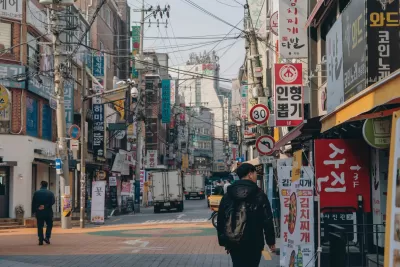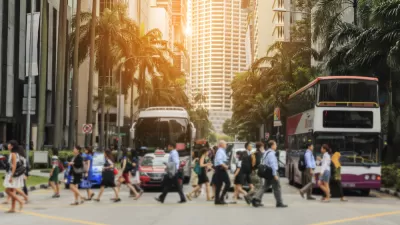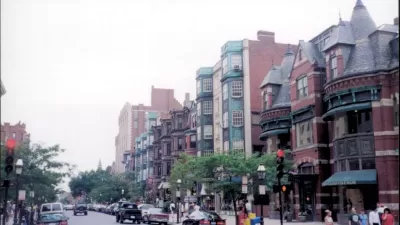The lives of Seoul's poorest residents in squalid below-ground housing are brought out of the shadows in the film "Parasite."

The film "Parasite," winner of numerous Oscars earlier this year, highlighted the extreme economic inequality in South Korea and the plight of Seoul’s urban poor, including the housing challenges they face.
"The fictionalized story reflects the lives of Seoul’s so-called dirt spoons, the urban poor, many of whom live in semi-basements in the congested city, where living high and dry — in apartment towers and away from the honking, yelling and odoriferous squalor of down below — symbolizes the wealth and status of the gold-spoon class," writes Choe Sang-Hun.
The city’s richest residents are segregated not just geographically in wealthy neighborhoods, notes Choe. "In Seoul, wealth is measured by how high you live, said Kim Nam-sik, a real estate agent in Seoul’s quiet Seongbuk district, home to dozens of foreign ambassadors’ residences and where the rich family of 'Parasite' lives."
People living in the basement homes — called "banjihas" — contend with street-level noise and dirt and substandard living conditions. "They remain largely invisible unless you explore back alleys at night and see their lit windows below street level. Many live, literally, in the long shadows of shopping and apartment towers," says Choe.
FULL STORY: For Seoul’s Poor, Class Strife in ‘Parasite’ Is Daily Reality

Trump Administration Could Effectively End Housing Voucher Program
Federal officials are eyeing major cuts to the Section 8 program that helps millions of low-income households pay rent.

Planetizen Federal Action Tracker
A weekly monitor of how Trump’s orders and actions are impacting planners and planning in America.

The 120 Year Old Tiny Home Villages That Sheltered San Francisco’s Earthquake Refugees
More than a century ago, San Francisco mobilized to house thousands of residents displaced by the 1906 earthquake. Could their strategy offer a model for the present?

Alabama School Forestry Initiative Brings Trees to Schoolyards
Trees can improve physical and mental health for students and commnity members.

NYC Outdoor Dining Could Get a Re-Do
The city council is considering making the al fresco dining program year-round to address cost concerns from small businesses.

HSR Reaches Key Settlement in Northern California City
The state’s high-speed rail authority reached an agreement with Millbrae, a key city on the train’s proposed route to San Francisco.
Urban Design for Planners 1: Software Tools
This six-course series explores essential urban design concepts using open source software and equips planners with the tools they need to participate fully in the urban design process.
Planning for Universal Design
Learn the tools for implementing Universal Design in planning regulations.
Ada County Highway District
Clanton & Associates, Inc.
Jessamine County Fiscal Court
Institute for Housing and Urban Development Studies (IHS)
City of Grandview
Harvard GSD Executive Education
Toledo-Lucas County Plan Commissions
Salt Lake City
NYU Wagner Graduate School of Public Service





























